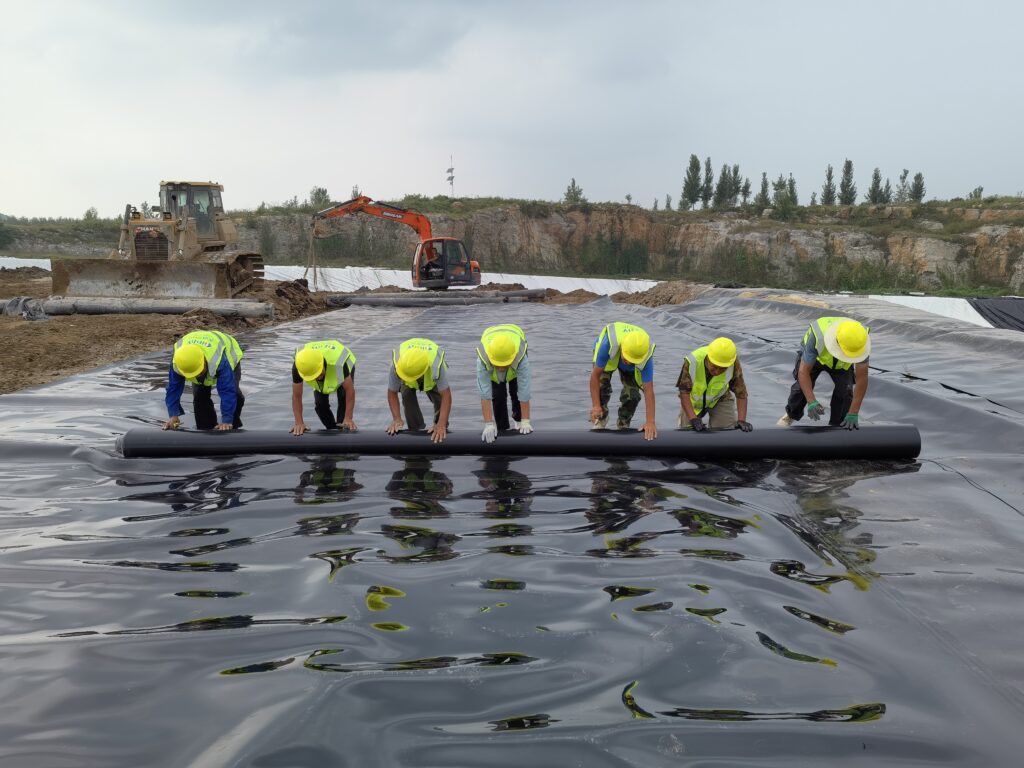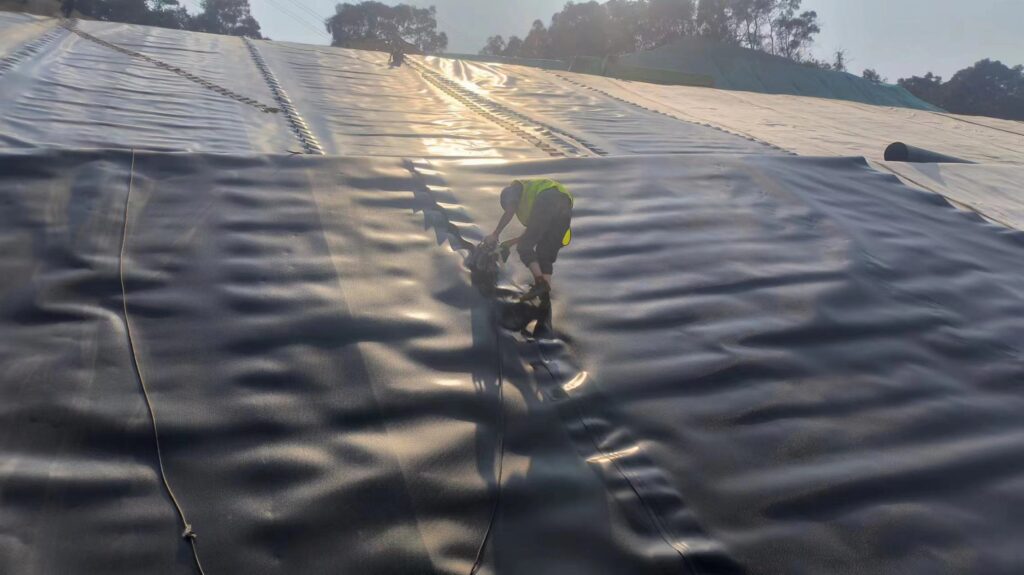what is Geomembrane HS code?
The Harmonized System (HS) code for geomembranes can vary based on the specific material and type. Generally, geomembranes are classified under the broader category of plastics.
Here is a commonly used HS code for geomembranes:
3920.10: For polyethylene geomembranes (HDPE, LDPE, LLDPE).
3921.90: Other plates, sheets, film, foil, and strip, of plastics, non-cellular and not reinforced, laminated, supported, or similarly combined with other materials.
For the most accurate classification, it’s important to consider the specific composition and use of the geomembrane and consult the local customs authority or a customs broker.

What is geomembrane used for
A geomembrane is a synthetic membrane liner or barrier used primarily for controlling fluid or gas migration in a human-made project, structure, or system. Here are some common applications of geomembranes:
Environmental Protection:
Landfills: Used as liners and covers to prevent the contamination of soil and groundwater by landfill leachate.
Water Containment: Used in ponds, reservoirs, and canals to prevent water loss and contamination.
Mining:
Heap Leach Pads: Used to contain chemicals and process solutions.
Tailings Ponds: Used to contain and isolate mining waste materials.
Water Management:
Dams and Reservoirs: Used as liners to prevent water seepage.
Canals: Used to reduce water loss and erosion.
Agriculture:
Agricultural Ponds and Pits: Used for water storage, irrigation ponds, and manure lagoons.
Construction:
Tunnel Linings: Used to prevent water ingress in tunnels.
Building Foundations: Used to prevent moisture migration into building structures.
Aquaculture:
Fish and Shrimp Ponds: Used to create a controlled environment for aquaculture farming.
Energy:
Solar Ponds: Used in energy storage systems to contain saline water.
Geomembranes are typically made from materials such as polyethylene (HDPE, LLDPE), polyvinyl chloride (PVC), and polypropylene (PP), chosen for their durability, flexibility, and resistance to chemicals and weathering.

Geomembrane vs geotextile
Geomembranes and geotextiles are both types of geosynthetics used in civil engineering and environmental projects, but they serve different purposes and have distinct characteristics. Here’s a comparison:
Geomembrane
Material:
Made from synthetic polymers such as high-density polyethylene (HDPE), low-density polyethylene (LDPE), linear low-density polyethylene (LLDPE), polyvinyl chloride (PVC), or polypropylene (PP).
Function:
Primarily used as a barrier to control fluid or gas movement.
Provides impermeability and containment.
Applications:
Landfill liners and covers.
Pond and canal liners.
Reservoirs and dams.
Containment of hazardous materials.
Mining applications like heap leach pads and tailings ponds.
Properties:
High impermeability.
Resistant to chemicals, UV radiation, and punctures.
Flexible and durable.
Geotextile
Material:
Made from synthetic fibers such as polypropylene or polyester, either woven or non-woven.
Function:
Used for separation, filtration, drainage, reinforcement, and protection.
Allows water to pass through while retaining soil particles.
Applications:
Road construction to separate different soil layers.
Erosion control and soil stabilization.
Drainage systems to prevent clogging by soil particles.
Protection of geomembranes from puncture or damage.
Reinforcement of slopes and retaining walls.
Properties:
Permeable to water.
Provides filtration and separation.
Can reinforce and stabilize soil.
Durable and resistant to environmental conditions.
Comparison
Purpose:
Geomembrane: Barrier to liquids and gases.
Geotextile: Separation, filtration, drainage, reinforcement, and protection.
Permeability:
Geomembrane: Impermeable.
Geotextile: Permeable.
Material:
Geomembrane: Synthetic polymers.
Geotextile: Synthetic fibers, woven or non-woven.
Applications:
Geomembrane: Used where containment and impermeability are required.
Geotextile: Used where filtration, separation, and reinforcement are needed.
Both geomembranes and geotextiles are essential in geotechnical and environmental engineering projects, often used together to achieve desired outcomes, such as using geotextiles to protect geomembranes from puncture.

